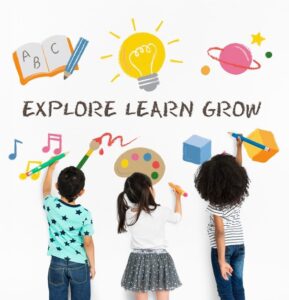Deep Learning - Cross-Curriculum teaching introduced in Prarambhika World School
After years of sipping knowledge, getting students to deeply learn is a daunting challenge. It is hard to get students to drink knowledge deeply or drink at all if they are rarely thirsty. Parched minds become satisfied with minimum learning expectations and some, especially as they approach middle and high school, begin to believe that school cannot quench their thirst as well as other societal options.
Working together, teachers can help students re-acquire the thirst for knowledge they were born with. The task of all educator teams in Prarambhika World School is therefore two-fold: provide a rich, rigorous, and relevant flow of knowledge and skills, and then find a way to lead the students to this water and then make them thirsty enough to drink deeply. Students and teacher teams focusing on learning deeply have the force to achieve learning beyond the traditional education dam and shoot out over the spillway to not only understand the torrent of available knowledge, but to also add to it in phenomenal ways.
On- Going Cross-Curricular Projects
- LKG to Std II : Titanic (Combining All Subjects)
- Std III and IV : Historical Scientific Discoveries (Combining Science and Social Science and Languages)
- Std V and VI : Building Historical Monuments (Combining Maths and History, English and Hindi)
- Std VII and VIII : World Summit (Combining English and History and Current Events)

